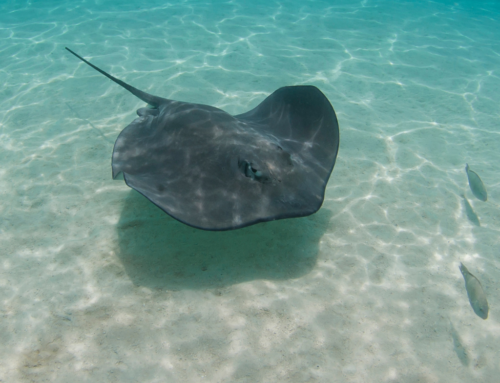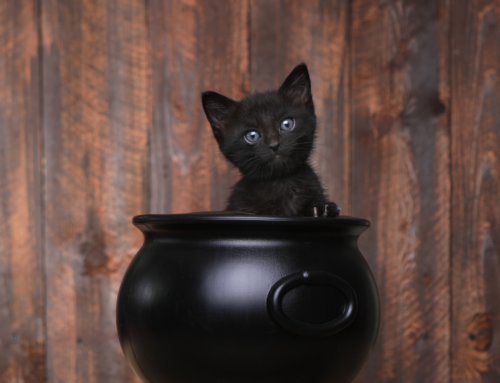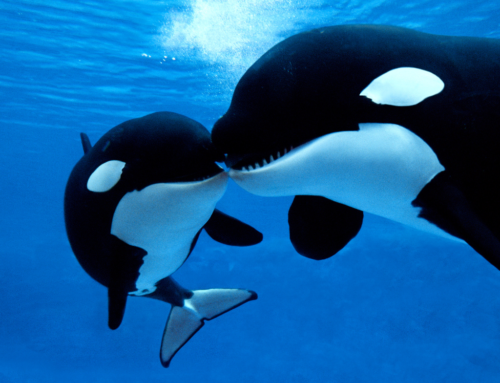
Summer and fall seasons mean beach vacations and fall festivals with plenty of games and souvenir shops that sell trinkets and…hermit crabs. In major tourist destinations like Ocean City, NJ and Panama City, FL boardwalks and tourist shops often have wire, barren cages full of hermit crabs in pretty painted shells as living souvenirs. Because of this, hermit crabs are considered one of the most abused pets in the United States and a huge animal welfare concern.
What are boardwalk hermit crabs?
A boardwalk hermit crab is any beach hermit crab sold as a souvenir in a beach gift shop or stand. Most are overcrowded in large wood and wire cages for tourists to see and be enticed to purchase. The majority of them are also in shells painted to look like Spongebob or Spiderman, giving the impression they are great gifts for kids. This cannot be further from the truth.

Hermit crabs in a warehouse before being shipped to pet stores and boardwalks
Why is the pet hermit crab industry so bad?
Hermit crabs are notoriously difficult to breed in captivity. In fact, there are less than five breeders worldwide and only two in the United States. To get to stores, crabs are rounded up by the hundreds, thrown in sacks, and shipped across the country. There are no pet stores that sell captive bred crabs. Once there, they are forcibly removed from their protective shells and forced into a painted shell to entice young children to buy them. This process kills thousands of crabs a year.
Not only is this process abusive, but it is beginning to affect the environment. Hermit crabs are scavengers, meaning they eat on dead plant and animal matter as well as insects, plants, and other food items they find within their natural environment. Crabs not only remove this decaying matter from the environment, but act as carbon and nitrogen sinks, preventing greenhouse gasses from entering the air and water from their food source. Hermit crabs play a crucial role in nutrient recycling in their natural habitats, as well as acting as an important food source for many other animal species. As such, environmentalists and conservationists are calling for an end to the wild hermit crab pet trade.
What is the proper care for hermit crabs?
Part of the reason why the collection of hermit crabs from the wild and the way they are sold is so unethical is how their proper care is ignored. Hermit crabs are relatively delicate animals and cannot survive in the small plastic or wire containers they are sold in with only pebbles, tap water, and pellets to eat. In fact, like many exotic pets, they have very specific care requirements including:
- Heat and humidity at 70-80 degrees F/%
- Treated filtered salt and fresh water
- An abundance of natural shells
- A minimum of 6 inches (15cm) of the proper substrate
- Daily fresh food
- A minimum of a 10 gallon enclosed fish tank
- Multiple crabs
- Tank heater pads, enrichment, and other assorted items
Because hermit crabs have modified gills, they require high heat and humidity to breathe. When this is not obtained in their enclosures or during transport to shops, they slowly suffocate. To make matters worse, commercial crab food is actually toxic, and the sponges that are given in their starter tanks harbor deadly bacteria and chemicals. This is only scratching the surface of their care needs.

An example of a good “crabitat” setup
Properly caring for hermit crabs can be very expensive. In addition, they can easily have a life span 10+ years in captivity in the right conditions. While it is not unethical to have pet crabs, owners need to do the proper research in order to ensure their needs are met. In addition, ethically obtaining a pet crab involves rescuing one or purchasing one from a breeder, which is easier said than done.
Where can I get a hermit crab if I still want one?
Any actual crab breeder will be highly ethical because it is so difficult. They will only breed in the exact right conditions and only if they feel safe and content in their surroundings. However, because they are so difficult to breed and there are only a handful of breeders around the world, a single crab will cost around $60 USD, and you will need multiple to keep them happy. For dedicated crab owners, this is a small price to pay for their hobby, similar to others who enjoy caring for unusual pets.
Why shouldn’t I get a hermit crab on vacation?
The bottom line is animals, especially wild animals, are not souvenirs or disposable trinkets. Even small, easily forgotten creatures that are considered short-lived (even if that is untrue) should not exist in improper conditions to remember a vacation to the beach. Any pet should be thoroughly researched and considered before bringing them home, no matter how inexpensive they seem to be. If you have fallen in love with the idea of pet hermit crabs, I encourage you to spend plenty of time researching their proper care from good sources and either rescuing them or purchasing them from breeders rather than a pet store, boardwalk stall, or tourist shop. Say no to buying crabs from these locations or bringing them home as a prize from a festival or carnival.
Learn more about hermit crab care
Crab Central Station is an informative YouTube channel with in-depth guides on how to care for hermit crabs. In addition, they are one of the breeders located in the US! The Hermit Crab Association has an excellent printable care guide as well. If you are ready to purchase a bred crab, I suggest checking out Josh’s Frogs. They are an ethical supplier of exotic pets and pet supplies that I have personally worked and they are rated very highly amongst the animal community. Or, you can check out your local Facebook Marketplace, Craigslist, or the Hermit Crab Association’s adoption program. These crabs will likely not be as healthy as captive bred crabs, but they are better than purchasing crabs from a pet store, souvenir shop, or other wild hermit crab supplier.








Leave a Reply